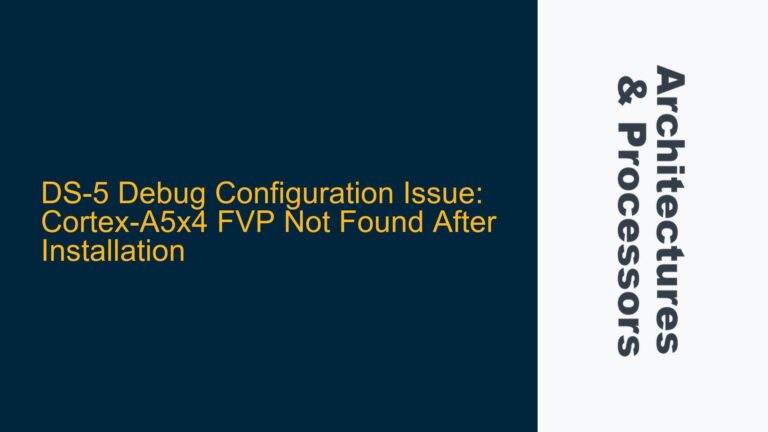APB Bus Protocol and the Necessity of PENABLE Signal
The Advanced Peripheral Bus (APB) is part of the Advanced Microcontroller Bus Architecture (AMBA) protocol family, designed for low-bandwidth control accesses to peripherals. It is a simple, non-pipelined protocol that is easy to implement and is typically used for connecting low-speed peripherals to the system bus. The APB protocol defines several signals, including PSEL (Peripheral Select), PENABLE (Peripheral Enable), PADDR (Peripheral Address), PWRITE (Write Enable), PWDATA (Write Data), PRDATA (Read Data), and PREADY (Peripheral Ready). Among these, the PENABLE signal often raises questions regarding its necessity and role in the protocol.
The APB protocol operates in two main phases: the SETUP phase and the ACCESS phase. During the SETUP phase, the address, write data, and control signals are set up. The ACCESS phase is when the actual data transfer occurs. The PENABLE signal is asserted during the ACCESS phase and is used to indicate that the transfer is in progress. However, the necessity of the PENABLE signal is not immediately obvious, especially since the PSEL signal could theoretically be used to track the phases of the transfer.
The PENABLE signal serves as a clear demarcation between the SETUP and ACCESS phases. Without PENABLE, the peripheral would have to infer the phase based on the state of PSEL and the clock cycle count, which could lead to ambiguity and potential errors. The PENABLE signal ensures that the peripheral can reliably determine when to sample the address and control signals and when to drive or sample the data signals.
Redundancy and Combinatorial Logic Considerations
One of the primary arguments against the necessity of the PENABLE signal is that it appears redundant. A state machine could track the phases of the transfer using the PSEL and PREADY signals, making PENABLE seem unnecessary. However, this perspective overlooks the role of combinatorial logic in peripheral design.
In combinatorial interfaces, the PENABLE signal provides a clear indication of the current phase of the transfer. When PSEL is high and PENABLE is low, the peripheral knows it is in the SETUP phase and should sample the address and control signals. When both PSEL and PENABLE are high, the peripheral knows it is in the ACCESS phase and should either drive the read data or sample the write data. This clear distinction simplifies the design of combinatorial logic in peripherals, reducing the risk of timing errors and ensuring reliable operation.
Moreover, the PENABLE signal allows for more flexible and modular peripheral designs. Peripherals can choose to use PENABLE to simplify their internal logic or ignore it if they have a more complex state machine. This flexibility is particularly valuable in large systems with a variety of peripherals, each with different design requirements and constraints.
Ensuring Protocol Compliance and Interoperability
The PENABLE signal is not just a convenience for peripheral designers; it is a mandatory part of the APB protocol. The APB bridge, which generates the APB signals, must correctly assert PENABLE to ensure compliance with the protocol. This requirement ensures that all peripherals, regardless of their internal design, can reliably interpret the signals and perform the required operations.
Without PENABLE, peripherals would have to rely on custom logic to infer the transfer phase, leading to potential inconsistencies and interoperability issues. For example, a peripheral that uses a simple combinatorial interface might misinterpret the phase if PENABLE is not used, leading to incorrect data transfers or protocol violations. By including PENABLE in the protocol, the AMBA standard ensures that all peripherals can operate reliably and predictably, regardless of their internal design.
Furthermore, the PENABLE signal plays a crucial role in error detection and recovery. If a peripheral detects an error during the ACCESS phase, it can use PENABLE to determine whether to retry the transfer or abort it. This capability is particularly important in systems where data integrity is critical, such as automotive or industrial control systems.
Practical Implications and Design Considerations
In practice, the PENABLE signal simplifies the design of both the APB bridge and the peripherals. The APB bridge can use a simple state machine to generate the PENABLE signal, ensuring that it is correctly asserted during the ACCESS phase. This simplicity reduces the risk of errors in the bridge design and ensures that it can reliably communicate with all peripherals.
For peripheral designers, the PENABLE signal provides a clear and unambiguous indication of the transfer phase, simplifying the design of the interface logic. This simplification is particularly valuable in complex systems with multiple peripherals, where ensuring reliable communication is critical. By using PENABLE, designers can reduce the risk of timing errors and ensure that their peripherals operate correctly under all conditions.
Moreover, the PENABLE signal allows for more efficient use of system resources. By clearly indicating the transfer phase, PENABLE enables peripherals to optimize their internal operations, reducing power consumption and improving performance. For example, a peripheral can enter a low-power state during the SETUP phase and only activate the necessary circuitry during the ACCESS phase, reducing overall power consumption.
Conclusion
The PENABLE signal in the APB protocol is not redundant; it plays a crucial role in ensuring reliable and efficient communication between the APB bridge and peripherals. By providing a clear indication of the transfer phase, PENABLE simplifies the design of both the bridge and the peripherals, reduces the risk of timing errors, and ensures protocol compliance and interoperability. While it may be possible to design a system without PENABLE, doing so would introduce unnecessary complexity and risk, making PENABLE an essential part of the APB protocol.
In summary, the PENABLE signal is a key component of the APB protocol, providing a clear and unambiguous indication of the transfer phase. Its inclusion in the protocol ensures reliable and efficient communication between the APB bridge and peripherals, simplifies the design of both the bridge and the peripherals, and ensures compliance with the AMBA standard. By understanding the role of PENABLE, designers can create more robust and efficient systems, leveraging the full potential of the APB protocol.






